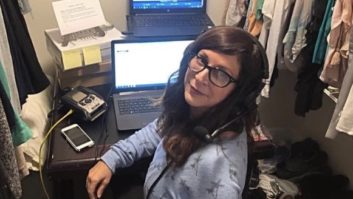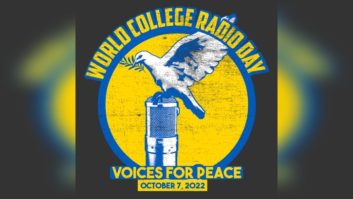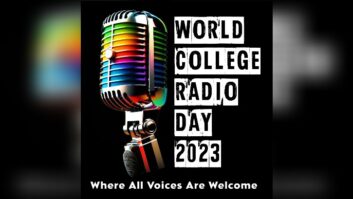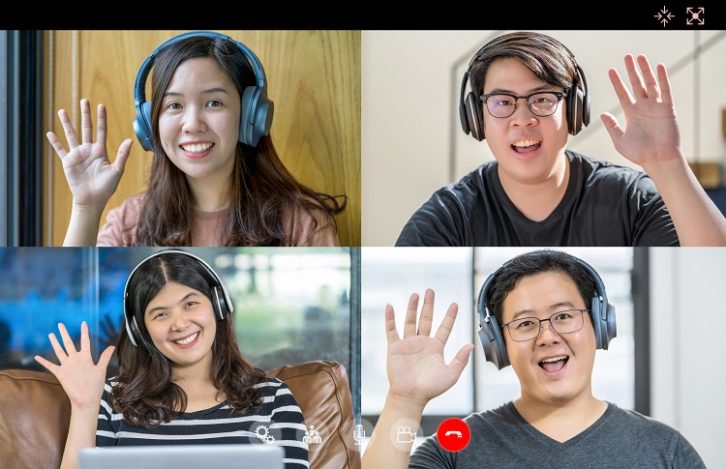
“Study Abroad Gone Wrong.” “Coronavirus Outbreak Leaves USC Empty.” “Students Protest on Campus.” “Voices of COVID-19.”
These could be descriptors from a college media time-capsule of the past year. In fact they are headlines from award-winning pieces at the National Student Electronic Media Convention held late last year and produced by College Broadcasters Inc.

Working amid unusual circumstances through most of 2020, students documented stories and news of campuses and communities grappling with the global pandemic.
“In a primarily virtual world, as due to the effects of the coronavirus pandemic, it can be hard to constantly adapt our functioning, even though we’ve been living through the pandemic for months,” said CBI’s Student Representative Laura Mooney.
While the situation was different at every campus and college radio station, the months of trial and error prompted lively conversations about education and radio. These themes were at the forefront at the convention as students, educators and professional broadcasters dug into the myriad ways that radio work adjusted.
Breaking News, Overlapping Crises
Laura Haefeli, TV reporter for CBS13, was new to the Sacramento area in the early days of the coronavirus outbreak. She was soon covering breaking news about quarantines, wildfires and civil rights protests.
Acknowledging the risks, she emphasizes the vital role that journalists play in reporting factual information to the public.
“We all do this to help people. It’s our way of doing our part,” Haefeli said. “If I didn’t do this, I’d probably be some kind of first responder … It’s an important job. .. It’s a dangerous job and I couldn’t imagine doing anything else.”
WCBS Newsradio 880 reporter Peter Haskell is a veteran of crisis reporting in New York City after the terrorist attacks in 2001 as well as following a devastating earthquake in Haiti. Haskell advises reporters to “be smart and protect yourself,” pointing out that “you don’t want to be the one doing a story from a hospital bed.”
Equally vital to Haskell is to “not lose your humanity” when covering the news. In difficult situations, he implores journalists to treat people the way they would want their own family to be treated.
Laura Haefeli also encourages student journalists to think creatively and to look for the positive angle on a story during a crisis. “Find the stories that are based in humanity,” she urges.
Remote Tips and Tricks
Of course, many interviews for radio took place remotely by phone or through online video and audio tools. Haskell points out that developing a rapport is key to a good interview and that it is much easier to do that in person.
For that reason, reporter Julia Ritchey of North Country Public Radio in the state of New York prefers Zoom or video interviews instead of the phone so that she can see the person she’s talking to and keep an eye on their reactions and body language.
As far as remote audio logistics, Ritchey recommends asking interview subjects to record audio to help add color. She provided an example of having a chef use a phone to get the sound of sizzling bacon for inclusion in her radio piece.
While Ritchey records herself using a Zoom recorder and a microphone she always has backup plans and has used the voice memo app on her phone “in a pinch.”
She cautions students to be prepared for equipment failure, check levels and capture at least a minute of sound wherever they are recording. This ambient sound serves as “glue” for the final radio story, allowing for smooth transitions.
Finally, when away from a proper studio, Ritchey suggests recording in one’s closet, saying that “it’s foolproof.”
Remote Best Practices
Educators and industry professionals continue to evolve approaches to distance learning and working. There have been bumps, as teaching radio remotely has obstacles. Radio station advisors labored to obtain licenses for editing software so students could work from home. Workarounds via remote computer access may seem viable, but for some latency makes it impossible.
Students may prefer methods or apps that their instructors are less familiar with. At Montclair State University’ WMSC(FM), demand to use the communication platform Discord prompted General Manager Anabella Poland to establish a virtual radio station studio in that space.
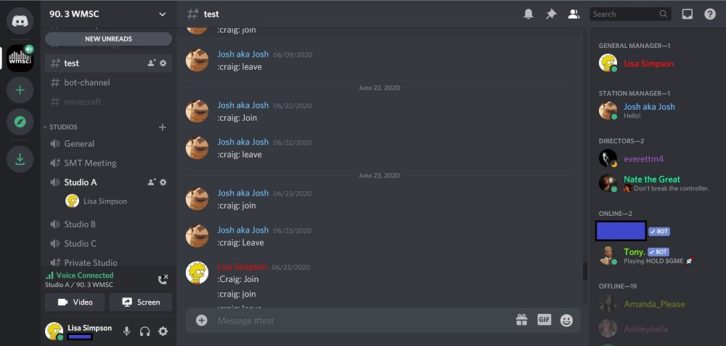
With countless ways to create and edit radio, some reported quality control issues. To help mitigate that, many stations crafted instructional videos and tutorials. At Pennsylvania’s Muhlenberg College, WMUH(FM) General Manager Paul Krempasky took the challenges in stride, philosophizing, “when it doesn’t work, that’s where education starts.”
Even working professionals grapple with these problems, as they navigate new technology for remote work and shifting expectations. Millie De Chirico, programming manager at Turner Classic Movies, commented on the good and bad sides of working at home.
While appreciating the non-commute and the flexibility, she found that the early days of the pandemic brought with it “hypercommunication.” She speculates that with people feeling isolated at home, there was a tendency to overcompensate.
In addition to Zoom burnout, she felt communication burnout and had to set more work/home boundaries. To help her “clock out” at night so that she wasn’t responding to texts at all hours, she got a dedicated work phone that she can put away and turn off at night, and set up a specific workspace in her residence.
The blurry boundaries between work, home, school and socializing affected college radio participants as well as those out in the business world. When not in person, it can be tricky establishing a sense of community at a station. Because of that, stations have experimented with remote events including game nights, talent shows, scavenger hunts, trivia contests and speed-friending. Similarly, some stations are introducing their community to newcomers by recording video tours so that people can get a glimpse of the operations. In some ways, this can even make stations more accessible than before.
CBI’s Laura Mooney was hopeful after hearing about the resourcefulness and resiliency of college radio peers. “Students across the country are successfully engaging with their audience and community in ways they’ve never attempted before. I think that’s really inspiring.”
[Related: “Remote Radio: Phase II,” a free Radio World ebook,]

